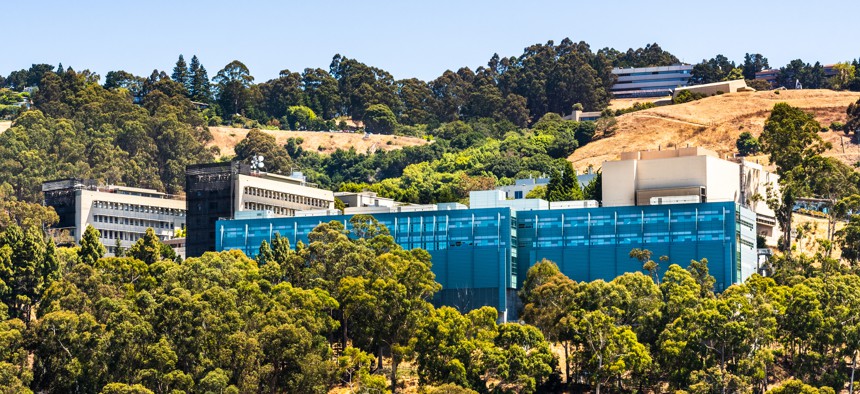New National Lab Supercomputer Inches America Closer to the Exascale Era

July 13, 2019 Berkeley / CA / USA - View towards Lawrence Berkeley National Laboratory (LBNL) at UC Berkeley is a US national lab that conducts scientific research on behalf of the Department Energy Sundry Photography/istockphoto
Officials said it should lead the Top500 list ranking the world’s most powerful machines.
Perlmutter, a next-generation supercomputer that’s planned to run among the planet’s most powerful, is going online at Lawrence Berkeley National Laboratory.
The first of a two-phase installation started unfolding this week for the advanced system, which the Energy Department’s National Energy Research Scientific Computing Center, or NERSC, will use to explore complex scientific phenomena—and even map the universe.
“We'll be able to take advantage of the system out of the gate,” Dion Harris, Nvidia’s lead technical product marketing manager for accelerated computing, told reporters during a press briefing to preview the new machine. “We're really excited, not just about the performance of the system, but about the applications and the overall science it will enable.”
Designed with Nvidia technology and based on an HPE Cray-provided platform that combines both graphics processing unit-accelerated and central processing unit-only nodes, Perlmutter was built for data-centric computing and artificial intelligence workflows. NERSC recently confirmed its projected performance is roughly three to four times that of the center’s current flagship supercomputing system, called Cori. Presently, nations are working to move from the petascale era of computing—where the fastest supercomputers can perform a quadrillion operations per second—to the new exascale age. At about 1,000 times more powerful than petascale supercomputers, exascale systems can complete a billion billion operations per second.
“Today, we're celebrating the unveiling of phase one, which is essentially the GPU-accelerated portion. So, just based on that phase one, we're expecting to be roughly 120 petaflops of double precision HPC performance,” Harris explained. “That would put us roughly in a top five position for the existing Top500 list as it relates today.”
The next phase, which will add the CPU-only nodes, is set to occur later this year. Once fully capable, those paired with the more than 6,000 Nvidia A100 GPUs will enable Perlmutter to deliver around four exaflops of performance. It will be the “fastest on the planet” for conducting the 16- and 32-bit mixed-phase precision math that’s used for some high-performance AI applications, according to Nvidia.
On top of underpinning internal experiments at the California-based lab, Energy’s NERSC also allocates compute time for which interested researchers can apply to run their projects on the sophisticated system.
“Perlmutter is really seen as sort of a testbed for the exascale program at DOE,” Harris noted during the call.
A blog post he wrote for Nvidia, published Thursday, confirms that in one planned pursuit, the supercomputer will support the assembly of “the largest 3D map of the visible universe to date.” Essentially, Perlmutter will process data from what can be thought of as a cosmic camera—the Dark Energy Spectroscopic Instrument, or DESI. The tool’s maps intend to help make sense of dark energy, or what Harris called “the mysterious physics behind the accelerating expansion of the universe.”
That phenomenon, dark energy, was largely discovered through the 2011 Nobel Prize-winning work of the new machine’s namesake Saul Perlmutter, an astrophysicist who is still active at Berkeley Lab. A mural on the machine is meant to pay tribute to him and his team.






